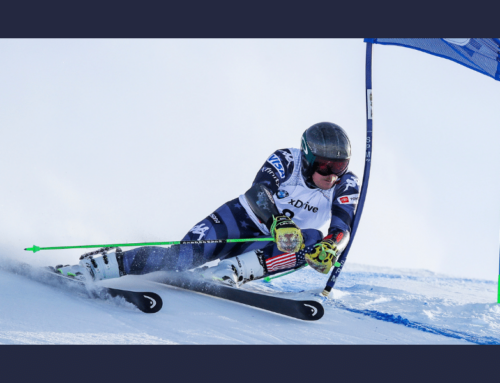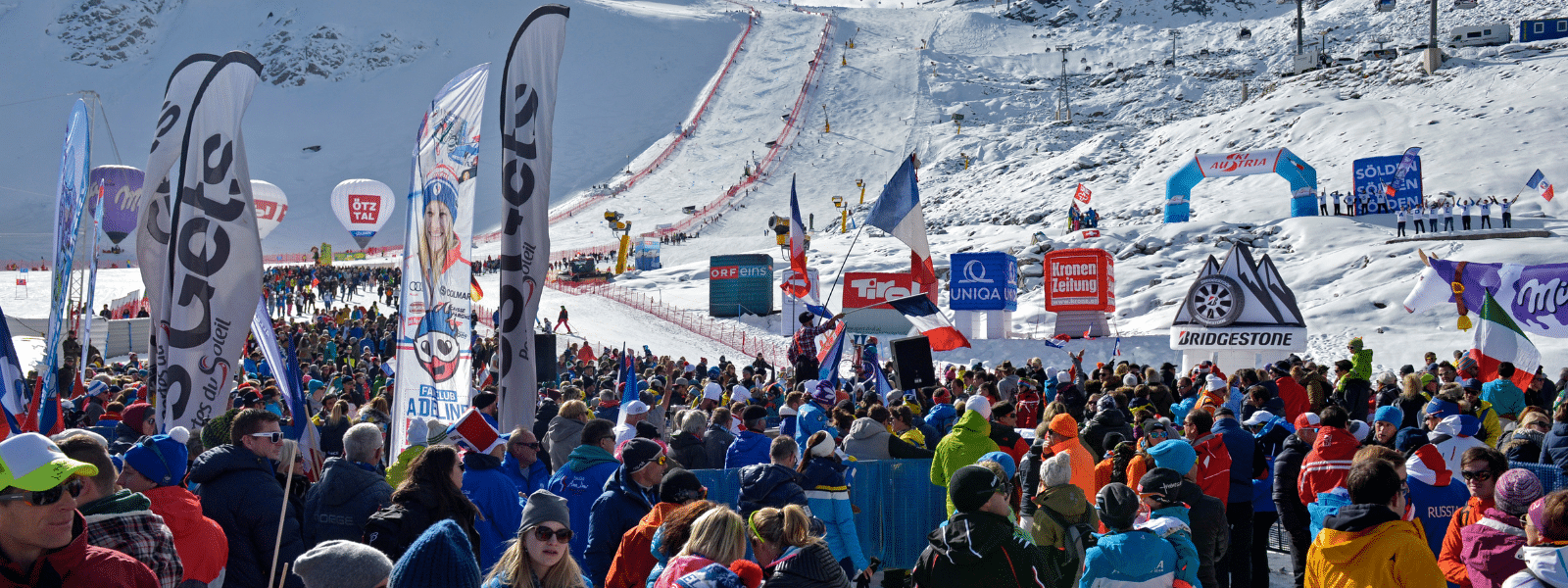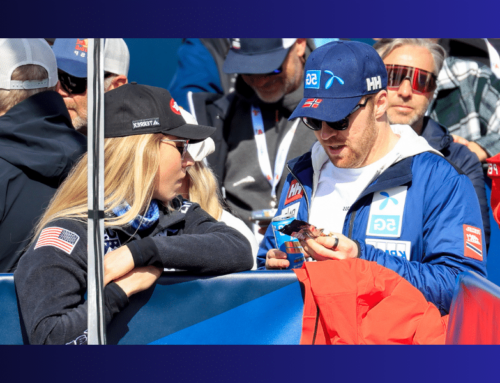Norwegian World Cup Racers Share Ski Club Experiences
Sofia Goggia, Kajsa Lie Vickhoff, and Corinne Suter, Kivitfjell: Photo GEPA
On their way to the top of the sport, what significantly helped Norway’s elite during their ski club years? Norwegian World Cup racers Lucas Braathen, Atle Lie McGrath, Mina Fürst Holtmann and Kajsa Vickhoff Lie share their views on what worked well during their younger years in the ski club that holds the most members on the 2023 Norwegian Alpine Team. Undoubtedly, ski clubs play a critical role in the country’s development structure that creates an abundance of top racers.
Articles in this series about the Norwegian development system:
Part 1 – The Norwegian Development System
Part 2 – Possibly the World’s Best Ski Club
Part 3 – Norwegian World Cup Racers Share Ski Club Experiences
Five World Cup racers
Five Bærums Skiklub (BSK) racers competed in the World Cup, 2022 Olympics and 2023 FIS Alpine World Ski Championships during the past two seasons. Their achievements and those of past BSK champions make BSK the Norwegian ski club with the most World Cup victories in history.
Simultaneously, the BSK Alpine Skiing program caters to youngsters with lofty ski racing goals. It also equally welcomes and includes all children and youth, no matter their level of skiing and racing ambitions. The ski club’s values of inclusion and building one team, as well as its training plan focused on long-term development, are outlined in a sports plan created in 2011 and still in use today. Part 2 of this series (previously published) describes the BSK sports plan.
Highlights of current BSK racers on the 2022-23 Norwegian Alpine World Cup Teams:
Mina Fürst Holtmann:
- 4th place 2023 Alpine World Championship slalom
- 6th place 2023 Alpine World Championship giant slalom
- Four 2022-23 World Cup top 10 results
Kajsa Vickhoff Lie:
- Bronze medalist 2023 World Championship super-G
- Two 2022-23 World Cup downhill podiums
- First career World Cup victory Kvitfjell
Lucas Braathen:
- 2023 World Cup slalom champion
- Fourth in the 2023 World Cup overall standings
- Seven 2022-23 World Cup podiums
- Three 2022-23 World Cup victories
- 7th place 2023 Alpine World Championship slalom
Atle Lie McGrath:
- 5th place 2023 World Championship alpine combined
- Five 2022-23 World Cup top five results
- 2nd place Adelboden slalom
Rasmus Windingstad:
- 5th place 2023 World Championships parallel
- Two 2022-23 World Cup podiums
In addition, BSK’s 22-year-old Halvor Hilde Gunleiksrud, a Norwegian Alpine Team member, won the 2023 European Cup slalom title and placed fourth in the 2023 European Cup overall.
What worked well for these top skiers during their young ski club years? McGrath, Braathen, Vickhoff Lie and Fürst Holtmann have shared their thoughts in speaking with Ski Racing Media.
Atle and Lucas’ early ski club years
McGrath was born in the USA in 2000 but moved to Norway at age three. He then started skiing when he was five. His parents are outstanding skiers: His father, Felix McGrath, is a former U.S. Ski Team World Cup racer and a highly respected alpine ski coach. Atle’s Norwegian mother, Selma K. Lie, was a successful cross-country skier with an impressive NCAA career with the University of Vermont ski team.
Atle’s father started coaching for BSK in 2007, making BSK a natural choice for Atle when he joined the club at eight.
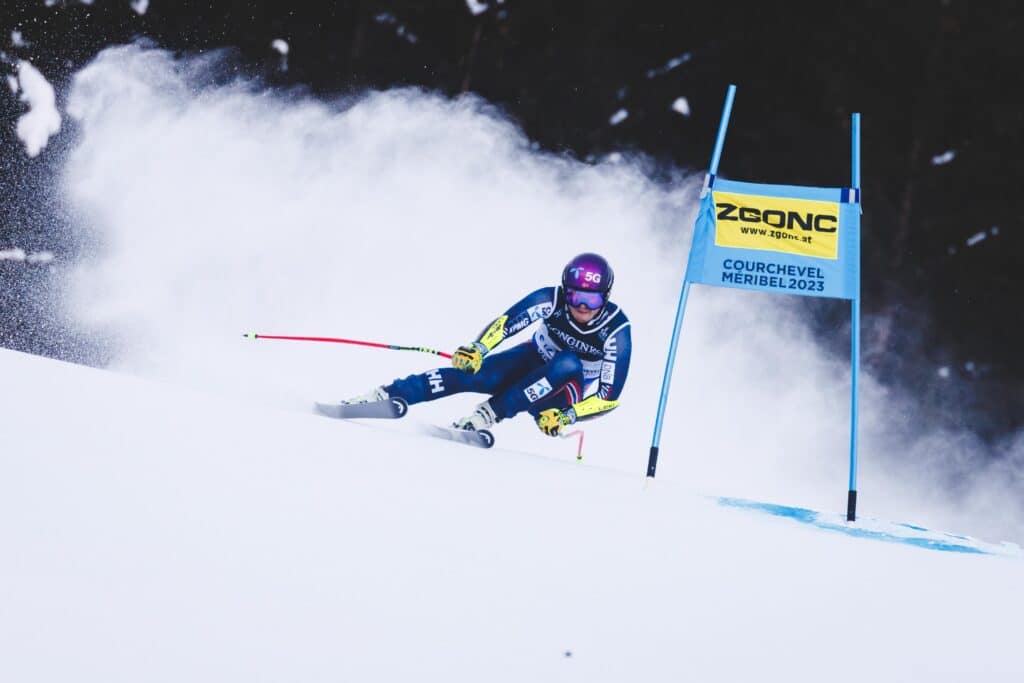
Braathen is two days older than McGrath. His family is also multicultural, as his mother and her family come from Brazil. Braathen’s Norwegian ski-loving father introduced Lucas to skiing when he was four. However, Lucas did not enjoy it and lied about his ski boots hurting, being sick, or being too cold so he wouldn’t have to ski. His father gave up teaching his son after one season.
The next time Braathen skied, he was nine years old – and this time, it stuck! At age 10, Braathen told his father he wanted to become the best in the world, and father and son made a 10-year plan with 10,000 hours of training to reach this goal. Braathen skied and trained with the Kongsberg Alpin ski club until he was 11 and decided to change clubs to BSK.
The two boys had never met until Braathen transferred to BSK. However, Braathen and McGrath quickly became great friends and have remained close ever since.
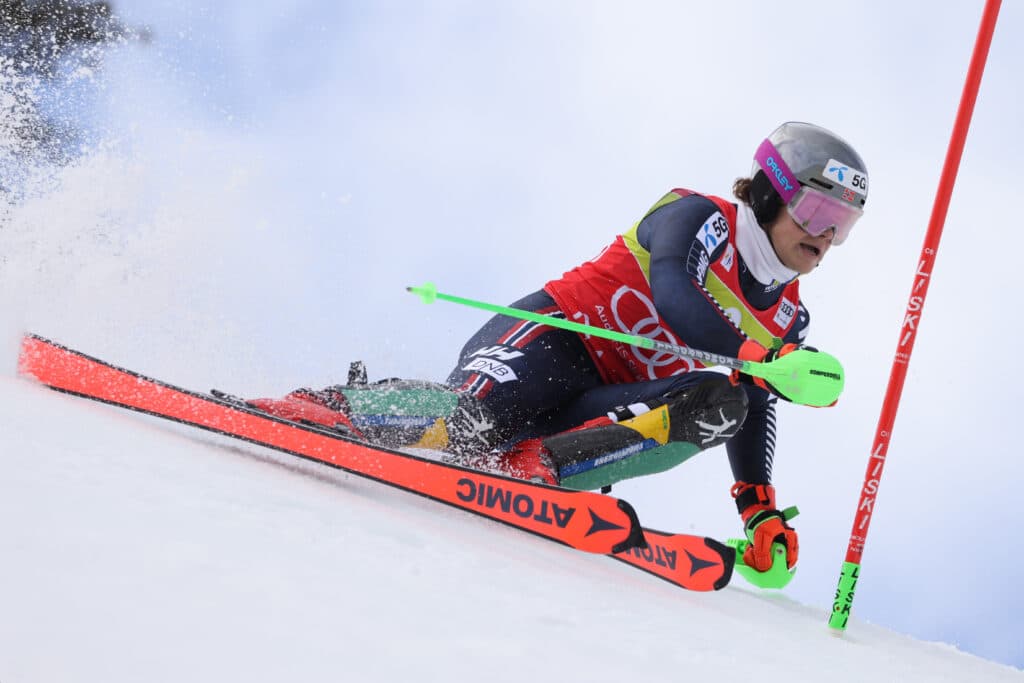
Kajsa’s coincidental start
Vickhoff Lie, born in 1998, started alpine skiing when she was around nine or ten years old and joined BSK at age 10. “I started pretty late compared to most of the kids in Bærums Skiklub,” she explains.
Vickhoff Lie and her best friend and neighbor were already participating in team handball when her friend’s father encouraged his daughter to start an additional sport. The best friend chose alpine skiing with BSK and Vickhoff Lie decided to join the club because of her friend’s decision. “My dad also liked the idea of me starting skiing so that we could go skiing together in the Alps when I grew older without him having to wait a lot for me on the hill,” Vickhoff Lie tells Ski Racing Media.
Does she now need to wait for him?
“Yes, so it was a bit of a backfire,” the friendly 2023 World Championship super-G bronze medalist responds.
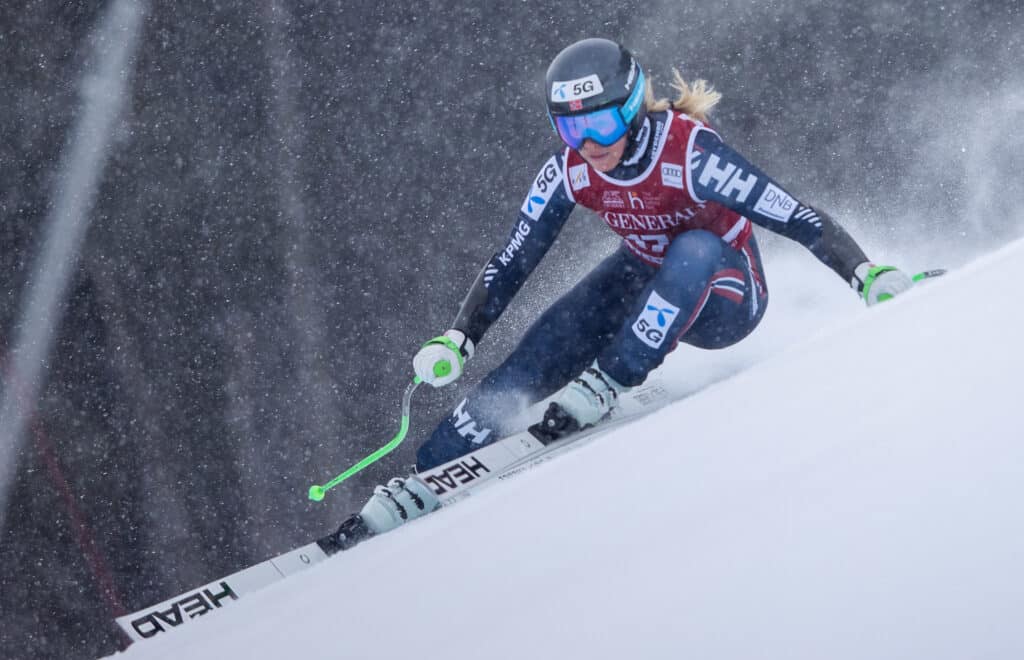
Mina’s joyful family skiing
Fürst Holtmann joined BSK when she was seven years old. The 1995-born World Cup slalom and giant slalom skier grew up in a family that loves skiing.
Like many other Norwegian families, hers has a mountain cabin. “We were always in the mountains during all our weekends and vacations. We have always skied a lot and preferred not to be on the groomed trails during these weekends and vacations,” she says.
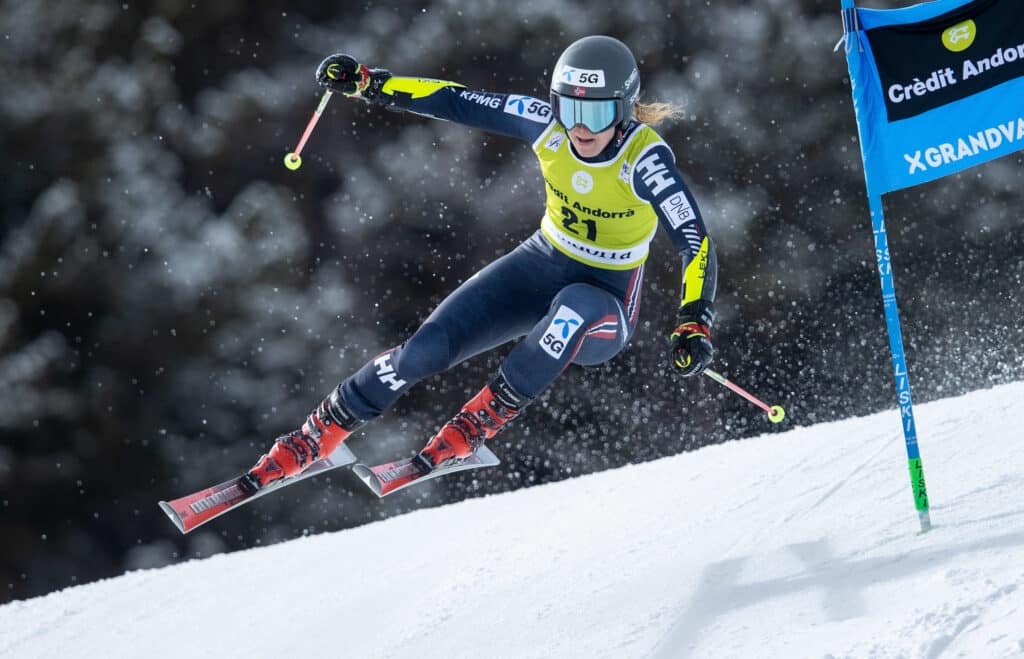
Room for everyone
The positive environment of BSK is one of the significant contributors to the club’s success. Everyone Ski Racing Media has interviewed confirms this about the club’s alpine skiing program.
Both McGrath and Braathen emphasize during their Ski Racing Media interviews the importance of BSK welcoming and including all skiers, regardless of their level of ambition. They also point out that all the young BSK skiers had fun together, independent of their competitive ambitions.
“I wasn’t super serious when I started. I just thought it was fun. But even at that time, some skiers (of the same age) were very serious. I felt this was the thing all along, that you were allowed to become as good as you wanted. And that was unique,” McGrath recalls.
Braathen, who grew up in a smaller ski club at a larger ski area, wanted a change of atmosphere and transferred to BSK. BSK is a larger club operating at a smaller ski area than his first ski club. Braathen explains: “I made the change because of the different culture in the clubs. In the club system in Bærum, there is more direction. People join Bærum because they know it is a club with room for a more competitive culture at early ages.
“That’s what’s fun; you come to a place where the most eager ones… well, you get back what you put into the group,” Braathen exclaims enthusiastically. Like McGrath, he pinpoints how the training group was open for all, no matter how much they wanted to put into the sport: “Half our group was there to have fun; the other half had huge ambitions. And we all had a great time when we traveled and during practice!”
So, despite significant differences in ambitions, was there a good atmosphere among everyone?
“Yes, yes!” Braathen and McGrath respond excitedly.
“What you asked for from the coach, if you had huge ambitions, you could have, whether it was an additional talk each day, help in the ski room, or viewing the training on video. Whatever it was, there was room for it. Whoever wanted something got it. If you didn’t want something, you could have fun, relax, and have fun with something else. That’s because there is room for everyone there,” Braathen explains.
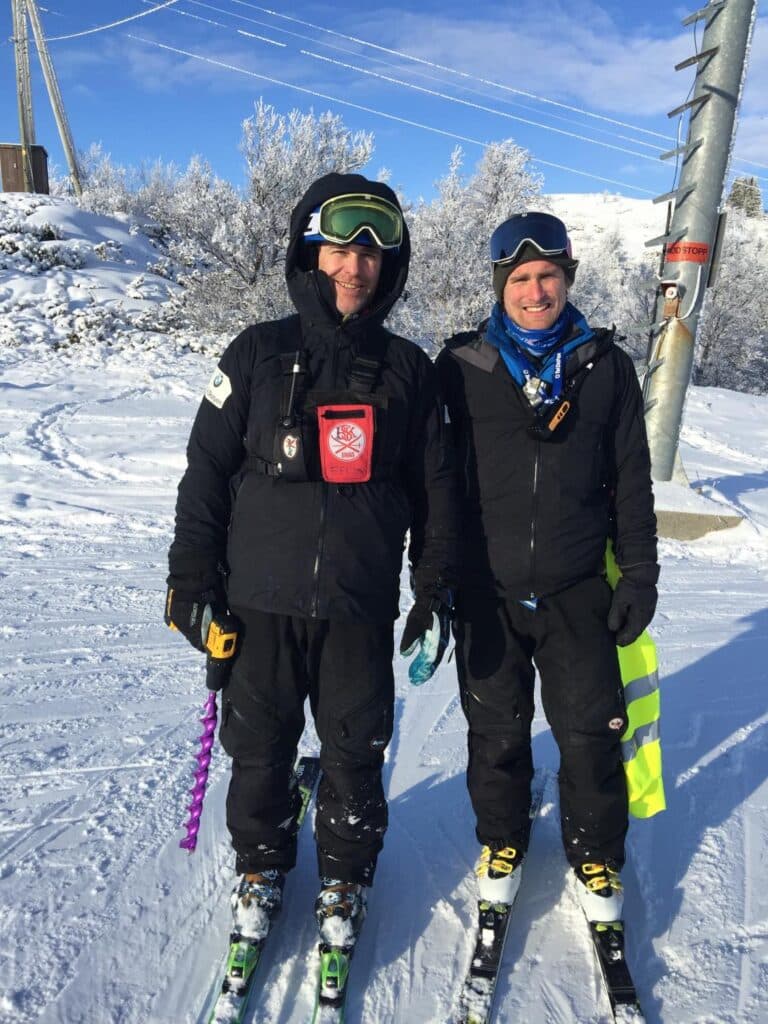
Friendships and the joy of skiing
When SRM asked what worked well at BSK and what worked exceptionally well for them in their ski club, Fürst Holtmann and Vickhoff Lie pointed to friendships and a positive environment. Despite being three years apart, the two World Cup racers highlight similar ski club memories. This is likely due to the consistent ski club culture and values demanded by the BSK Alpine Skiing sports plan. Plus, they describe cultural aspects essential for young athletes to thrive but might not be prioritized in every club or team.
“The first thing I think of is that we had a great environment, a very good girls’ environment. There were so many of us. I believe that keeps people in sports, that we had fun for so long. Yes, of course, we were serious about alpine skiing, but there was always room for playing and having fun skiing,” Fürst Holtmann says. Based on what she observes on the ski slopes these days, she believes ski training for young skiers has become a lot more extreme, that there is less room for freeskiing and play, even during families’ ski weekends where some kids train gates all day. “Everything has become a training camp,” she says. She believes it is also essential to spend time playing around on skis “to keep the joy of skiing for as long as possible. That is what keeps most people in the sport,” she repeats.
“We always skied between runs and after the races. We skied in the forest, skied on one ski and played a lot and we had young, cool coaches who created a good atmosphere. Then you become relaxed and enjoy what you are doing. That is important as an elite athlete and in life in general; that you should thrive because of what you are doing, and then you perform your best,” Fürst Holtmann says.
Vickhoff Lie joined BSK with her best friend and didn’t know anyone else in the club. She soon made new friends and continued skiing because of the excellent environment in the club, even though her best friend stopped ski training. “When I started, there were 25-30 girls in my age group. There were so many skiers, the coaches were cool, and it was such a great environment, the boys and girls together. We had a cool training camp each year when we traveled abroad together,” the world-class speed skier reports enthusiastically. She summarizes why her ski club experience was so positive and kept her in the sport through all these years: “Really, that there were so many skiers and we had so much fun together!”
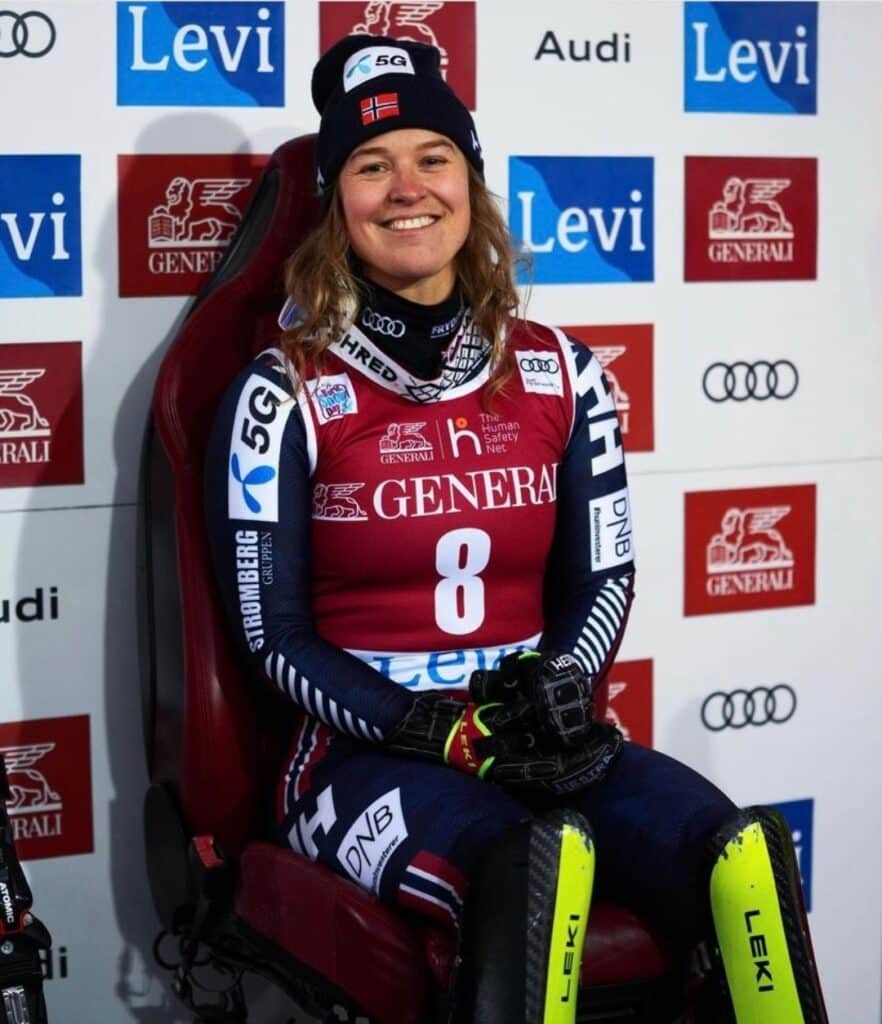
McGrath says there was a lot of playful training during his first two-three years with the ski club, especially before and after the gate training. He adds: “I remember that when you are ten years old, whether or not the training is perfect isn’t so important. You want to have fun!”
Braathen and McGrath highlight how the ski clubs create a foundation for a skier’s developmental journey. “It starts at the club level, and it sets the standard for the rest of a skier’s development,” McGrath says.
According to children’s needs
Children’s club sports in Norway are supposed to help children experience sports that are positive for each child and to be organized according to children’s terms and needs. “The Children’s Rights in Sports” and “Provisions on Children’s Sports” regulate the terms for children’s sports until the child turns 12 years old and were adopted by the Norwegian Olympic and Paralympic Committee and Confederation of Sports (NIF) General Assembly in 1987.
According to NIF, the values expressed in “The Children’s Rights in Sports” are designed to ensure that the children feel secure, experience an opportunity for mastery and can influence their activity when participating in sports.
Hence, young ski racers in Norway aren’t ranked by their race times until they reach the U12 age group. Until then, no result list states what place you finished (though many still make the count independently). All race times are reported in the kids’ starting order. Also, if there are awards, they must be given to all the race participants and presented in the order of their start number. The focus is not supposed to be on who skis the fastest. It should instead be on an individual’s progress and learning the fundamentals of good technical skiing while having a positive experience.
The annual national children’s race called Bama Alpinfestival is a unique example. This national event focuses on children’s participation and having fun while being a part of a significant national skiing event. The event was created in 2004 after then-Norwegian Ski Federation delegates Einar Witteveen and Jørund Li attended a FIS conference and learned about the Swiss Ovomaltine Cup and its contributions to the development of Swiss skiers. Presented with the idea, the sports club Ål Idrettslag took on the task of organizing a similar race in Norway. It will soon celebrate its 20th anniversary, providing an extremely popular and successful event. Li says the goal is to inspire children to enjoy ski racing, give them an event to look forward to throughout the year and enable them to dream about what they can accomplish in the future.
Every year, around 1000 young athletes participate in this fantastic race weekend in Ål, Norway. The race weekend starts with Friday super-G races for ages 11 and 12. The weekend also includes giant slalom, slalom, parallel and/or GS ski cross events for U8-U12. Any child who is a ski club member can enter the event; there are no qualification races. The runs of the children aged U10 and U8 are not ranked and each participant in all the age groups, including U12, receives awards. However, the skiers who are 11 and 12 years old are ranked by their times. The top-six finishers in the age 11 and 12 groups receive additional awards.
At the same time as enjoyment and individual performances (not results) are promoted, some skiers, their parents, or coaches focus heavily on the children’s race results – a common situation in many youth sports environments worldwide.
The transition at ages 12-16
Things become a bit more serious between 12-16, and McGrath believes BSK helps make the transition into the new, more competitive phase as smooth as possible for the young skiers. He points out how the racers naturally become more mature at the same time the racing becomes more serious.
McGrath says, “These are the years when you really build the technical base. Suppose you want to be among the best in the world, these are the most critical years.” Once again, he emphasizes what he experienced as a “good” and “unique” balance at BSK, between being serious and having fun in training. He describes the club training when members are between 12-16 years old as solid and professional.
McGrath also remembers particularly well some experiences from BSK training camps at the Juvass glacier ski area in Norway (now called Galdhøpiggen Sommerskisenter):
First, the BSK skiers would complete two ski training sessions, separated only by a quick lunch. “Then, at the end of the day, we were ‘forced’ to do three runs on one ski, or they brought ‘blades,’ those short skis. It was a good mix; you got good training days, and they added play. BSK was not afraid to do enough of both,” he says, and continues with a chuckle: “I remember you’d make 15 runs at Juvass and then they make you ski on one ski! It made you wonder, ‘why do I bother to do this?’ But it makes you tough, and you become a better, more complete skier.”
Variation and speed
McGrath and Braathen say BSK focused on variation in training and training arenas during their ski club years. One factor was training in a variety of locations and terrains. Another factor was offering training that made the skiers versatile and able to adapt to any conditions. There was also a focus on training attributes needed in future speed events.
McGrath says, “One thing we did more than many ski clubs was to train a bit of speed. That might be why Lucas and I did so well in our first super-G race.” McGrath finished fifth and Braathen seventh in their inaugural World Cup super-G in Beaver Creek, Colorado, on Dec. 4, 2022.

Vickhoff Lie, after experiencing a long recovery from injury, returned with a successful 2023 speed season. She fondly remembers starting speed training at age 11-12 during a BSK mid-winter speed camp. The skiers were divided into groups and received an excellent introduction to this new experience, according to Vickhoff Lie: “Felix (McGrath) introduced us to this in a good way. I loved it from day one. I don’t think we were afraid the first time. We trained in a wave track, jumps and a speed track.”
Like BSK, many Norwegian ski clubs organize speed camps during the winter, often during the week before the annual Bama Alpinfestival, where U12 racers compete in super-G. This experience represents an exciting introduction to super-G skiing for many young Norwegians.
Predictability and continuity
The BSK Alpine Skiing program follows a sports plan created by Atle’s father, Felix McGrath, in 2011 and is still used today. Predictability and continuity are essential factors according to this plan. The plan dictates that the training camp schedule for the following season is ready and presented to the young skiers and their parents in May. May is considered the start of the new season. This way, everyone involved can plan.
You can read more about the BSK Alpine Skiing sports plan in the article Possibly the World’s Best Ski Club.
The younger McGrath appreciates that the ski club had a set schedule. He shares his youth’s yearly off-season ski camp routine: “We had summer camps at Juvass or Folgefonna (Norway). Then we often skied indoors in the Netherlands in a ski hall named Landgraaf, where we started our slalom. And we had a training camp in Hintertux every year during the school’s fall break (in October).”
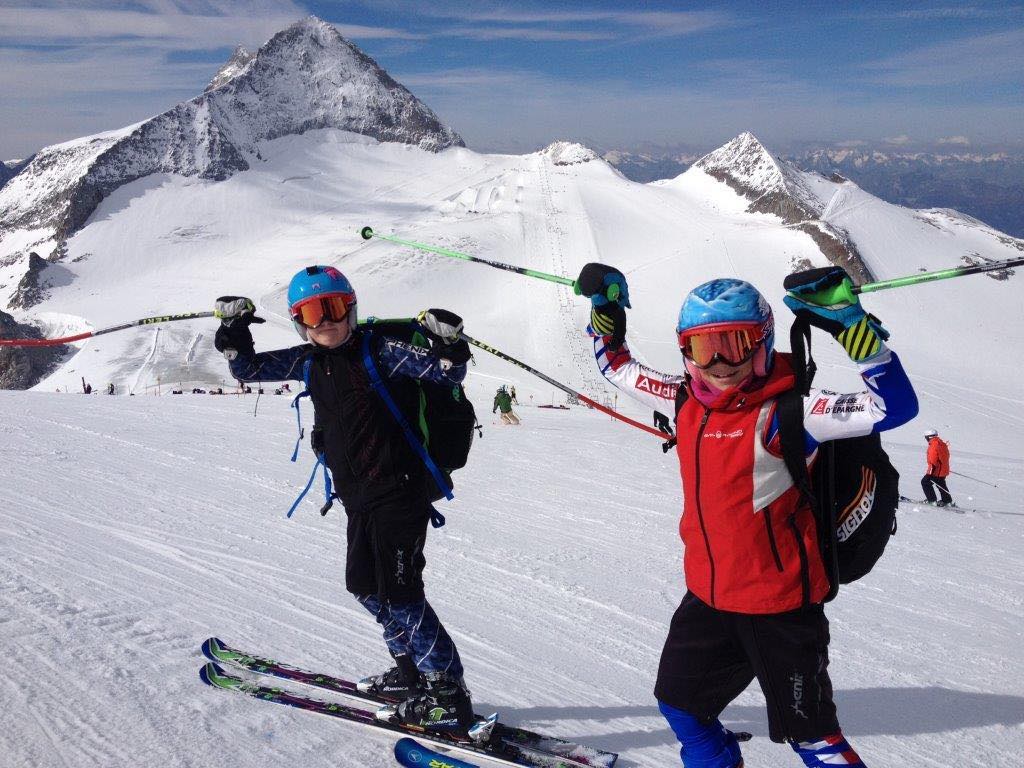
There were BSK ski camps during the winter season as well. “We were all over,” Lucas says. That included Christmas break and speed camps at Norwegian locations like Hemsedal, Ål and the 1994 Olympic and World Cup venues in Hafjell and Kvitfjell.
Variation and adaptability were, and are, core themes in the BSK ski training, while predictability, continuity and long-term development are essential elements still used in the BSK sports plan today.
The coaches
According to the BSK sports plan, the coaches for each age group should be in place and introduced to their training groups at the spring meeting. The coaches work with their group of skiers throughout the year, from the spring until the following spring, in dryland training and ski practice. When possible, coaches train the same group for multiple years.
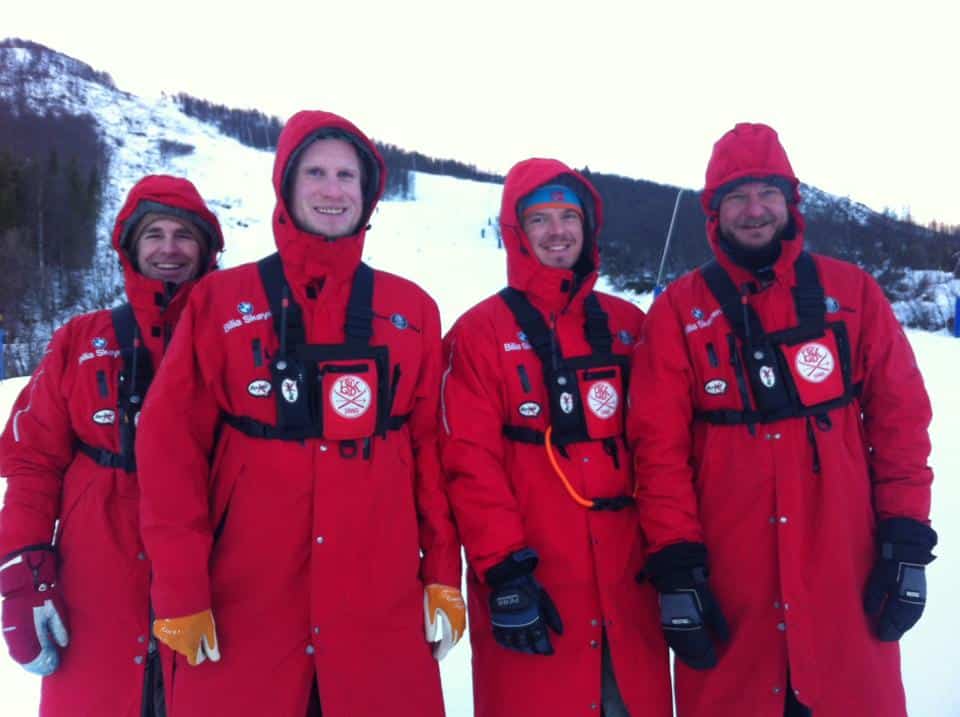
The current BSK World Cup racers believe several of their past club coaches’ abilities were crucial to their development:
McGrath remembers and appreciates that his ski club coaches made sure they noticed every skier during practice.
“We had pretty good coaches all along. One of our current national team coaches, Ola Masdal, was our coach for four years in Bærums Skiklub. So, we have a long history with him through BSK,” McGrath says.
Fürst Holtmann appreciates the coaching style of her U14-U16 club coach, Bjørn Myhre: “He was good at getting all of us to work in the same direction while seeing each person and making things clear and simple when working on skiing.”
A ski racer should only have to relate to one or two coaches at a time, according to Fürst Holtmann. “If you have more than that, it might become stressful and chaotic and possibly result in conflicting feedback concerning their skiing. Then you end up frustrated and confused. Having small variables is useful and clarifies the training situation. There are so many things going on when you are skiing, so dealing with one, max two things is important,” she explains, adding that her coach Myhre was excellent at this.
Vickhoff Lie believes selecting the right coaches is one of the most critical tasks for a ski club. She points out the benefit of “coaches who can make things fun for the children and promote important values.” She says her club coaches were good and “cool” and mentions several individual BSK coaches, from the young ones who had recently completed their racing careers to the more experienced ones. Since then, several of her club coaches have moved on to coach for ski academies, the Norwegian Alpine Team, and other professional organizations.
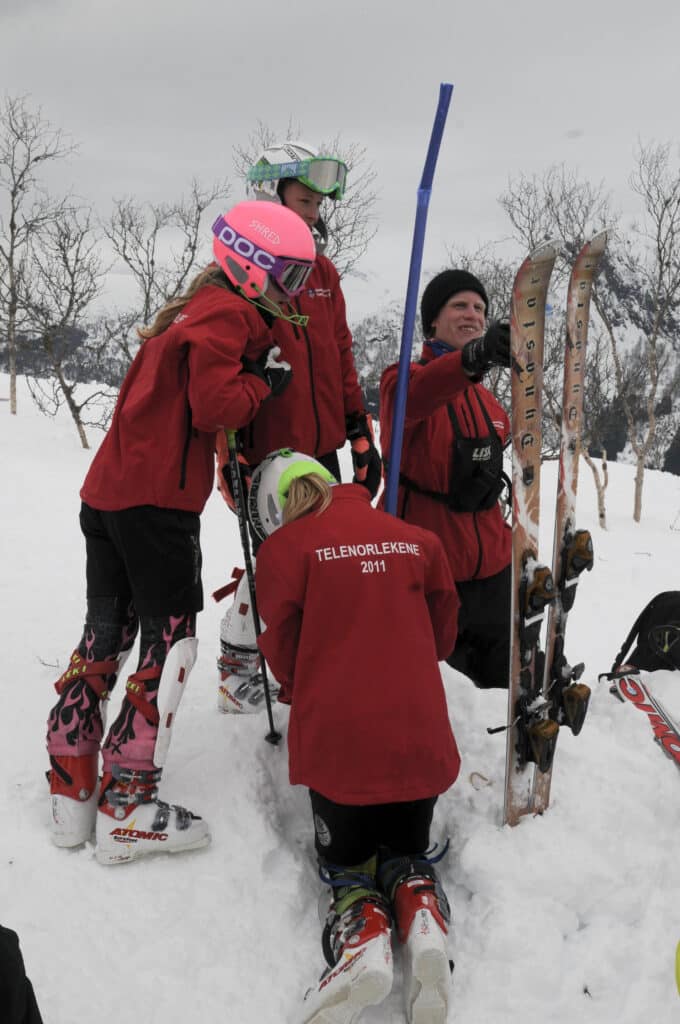
BSK makes a concerted effort to attract good coaches by offering education and opportunities to develop their coaching skills. Former general manager Felix McGrath also looked for specific attributes in the coaches he hired while working for BSK, as reported in Part 2 of this series: Possibly the World’s Best Ski Club.
Girls and boys
In Norway, as in many other countries, girls tend to quit sports at a higher rate during their teenage years than boys. Fürst Holtmann and Vickhoff Lie point to the value of many girls in their ski club training groups.
At the same time, Fürst Holtmann and Vickhoff Lie value the fact that the girls and boys trained together.
“We were both boys and girls during training camps and skied together until we started ski academies. That creates diversity in the environment.” Fürst Holtmann is convinced it was a significant positive factor. “It was often good to see the boys ski as they tend to ski more aggressively than girls.” She also believes the boys benefited by having girls ski in the same training group.
When Vickhoff Lie attended Dønski Alpin ski academy, the girls and boys started training together. “We were lucky to have Per Erik Vognild as a coach, who was used to coaching the boys. But then he realized that the girls in Dønski pushed as hard or harder (than the boys). So, he mixed the girls and boys based on their level and eagerness. Then we became a really cool group that pushed full gas on both the men’s and women’s side since we trained together,” she tells Ski Racing. “It is disputed whether or not you should split the boys and girls in ski academies. But I am still convinced they should be allowed to continue training together.”
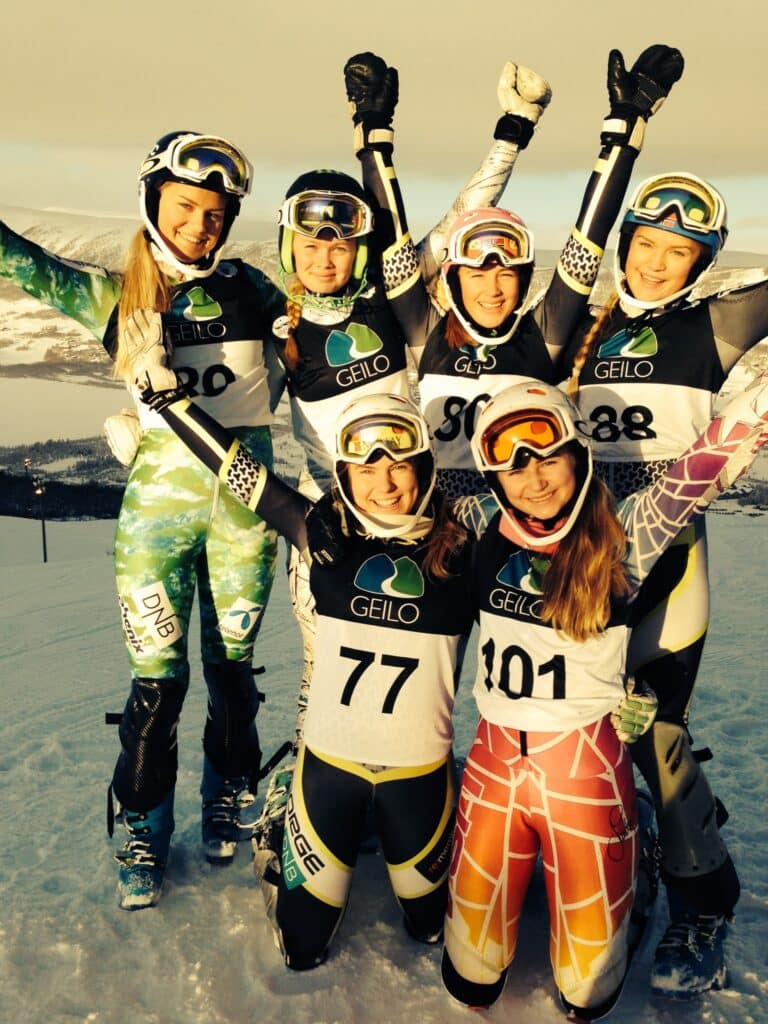
Keeping the girls longer
Vickhoff Lie is passionate about convincing skiers to get involved in speed events. Notably, she is diligently working towards creating a speed camp for girls and is getting closer to achieving her goal.
Based on her experiences, Vickhoff Lie encourages anyone, especially girls, to stay in ski racing longer. “All the girls I know who stopped ski racing are so grateful for their time in the sport and what they got out of it. You become so well prepared for the rest of your life when meeting others, functioning well in groups, becoming independent, working towards a goal, accepting constructive criticism and traveling. You have an extreme advantage compared to everyone else in professional life,” she says with complete conviction.
She pleads: “If they could just continue for two more years when considering quitting. Because then more skiers will also continue, you will get more out of your participation for the rest of your life, and there are more who will have the opportunity to become the best in the world and have fun skiing!”
Vickhoff Lie knows this is true from personal experience. The big group of skiers, including all the girls in BSK, created the environment that kept her in ski racing. Now she is a World Championship bronze medalist who has stood on World Cup podiums and is looking forward to continuing as one of the world’s best speed racers. It all started in her ski club environment and her local ski area.
The ski area
Racers and coaches have told Ski Racing Media that BSK’s home area, Kirkerudbakken, is an essential factor in the ski club’s success. The compact ski area with a T-bar lift facilitates efficient training. The skiers get many runs during each training session, and with floodlights and good snowmaking, the racers can train after school and at night throughout the long season.
“And they always play music on the ski area’s loudspeakers!” Vickhoff Lie adds happily, pointing out how this helps create an enjoyable environment for everyone who is there night after night.
The ski area is open to the public and ticket sales (approximately 80% from the general public and 20% from the members of BSK Alpine Skiing, Freeski and Snowboard) cover the operating costs. The local municipality also contributes a small amount, but the primary revenue is public ticket sales.
There is a positive ski club atmosphere and an enthusiastic mindset among skiers, coaches and parents on the hill, as former BSK general manager Felix McGrath explained in the article Possibly the World’s Best Ski Club. At the same time, training in Kirkerudbakken also requires a good share of focus:
“Kirkerudbakken is a surprisingly challenging hill,” Atle Lie McGrath says. “I trained slalom there around New Year’s Eve these past few years, and I get surprised every time by how challenging it is.”
Many of the best Norwegian alpine skiers and national team members come from the Oslo area. The younger McGrath points out that many people living near the capital have plenty of resources. Still, he also believes the excellent availability of smaller training hills in and around Oslo plays a significant role.
Braathen, who changed clubs, which moved him from a ski resort to the smaller Kirkerudbakken, says there are pros and cons experienced by growing up by a resort vs. a smaller ski hill: “It is more efficient on a smaller training hill. The number of runs you can make is quite extreme.” He also highlights the advantages of growing up in a ski resort: “When you are done training, you can go freeskiing in a big resort. You can ski powder or ski in the park and do all kinds of things.”
“I remember making 20-25 runs during each training session when I was younger. I skied so much, and you can do that on a hill like Kirkerud.” McGrath enthusiastically adds, “In the long run, you build good skiers that way. The hill is short and provides very efficient training!”
The environment – a key factor
Next to the BSK alpine ski racers’ main training hill in Kirkerudbakken lies the training hill for the BSK freeskiers and snowboarders. Everyone shares the T-bar and Poma lifts between the two slopes. Several of the world’s best freeskiers and riders have grown up and trained alongside the alpine skiers in BSK’s home arena.
Freeski Athletes
- Birk Ruud
- 2023 World Champion in Freeski slopestyle and bronze medalist in big air, five-time 2023 World Cup winner in Freeski big air and slopestyle, 2022 Olympic champion in Freeski big air, five-time Winter X Games medalist, and a good friend of Lucas Braathen.
- Sandra Eie
- 2023 World Championship silver medalist in Freeski big air.
- Tormod Frostad
- 2022 Olympian and 2023 World Championship participant
Snowboarders
- Mons Røisland
- 2023 World Championships silver medalist and 2022 Olympic silver medalist in big air.
- Hanne Eilertsen
- 2022 Olympian
- Ståle Sandbech
- 2017 World Champion in big air, 2014 Olympic silver medalist in slopestyle, six-time Winter X Games medalist, and with an Olympic and World Cup career spanning from 2010-2022.
Over the years, thousands of happy, enthusiastic, and playful young skiers and boarders have roamed the Kirkerudbakken ski area and contributed individually to the ski club culture. The youngsters, along with their parents, coaches, other staff, and many volunteers, have formed an excellent place to spend time, meet friends, play, and – for many – also work hard to reach their individual goals.
When asked to name the essential contributing factors during their ski club years, Braathen, McGrath, Fürst Holtmann and Vickhoff Lie all agree on one thing: The culture and environment at BSK and Kirkerudbakken.
“Ultimately, it is the skiers, the parents and the coaches who together create the environment,” McGrath says.
Braathen is confident in the ski club’s environment being critical and points out how it is made up by many factors: “There will never be one single individual that is the reason for something, never a coach, never a chairman. They can create space for this and make it possible, but it can never be entirely (because of) them.
“That there is room for being professional from such an early age, at the same time as there is room for everyone else to be a part of it as well – that makes the club what it has become,” Braathen explains to Ski Racing Media with conviction and passion.
This is BSK, a ski club with great success and one of many ski clubs that are part of the Norwegian development system. The inclusion of everyone, the friendships, the facilitation of excellent training for all levels, good coaches, the creation of one team even when goals differ, the enthusiasm, people working together in the same direction, the long-term view with room for very high goals, and an environment that values the enjoyment of the sport while working hard. These are considered essential factors culminating into a ski club environment where many children thrive. This environment creates the foundation from which some young skiers can and do continue training hard for many years to reach the highest international level of alpine ski racing.
Norwegian skier development – the whole series:
Part 1 – The Norwegian Development System: The Alpine Director for the Norwegian National Team, Claus Ryste, discusses the Norwegian model, where ski clubs and ski academies play the lead roles on the path to the national team.
Part 2 – Possibly the World’s Best Ski Club: A view into a successful Norwegian ski club, its sports plan and thoughts from the plan’s creator, ex-U.S. Ski Team racer and coach Felix McGrath.
Part 3 – Norwegian World Cup Racers Share Ski Club Experiences: Norwegian racers Lucas Braathen, Atle Lie McGrath, Mina Fürst Holtmann and Kajsa Vickhoff Lie share their views on what worked well during their young ski club years.

